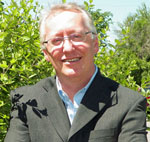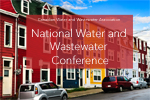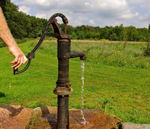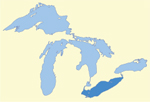Visit https://www.naylornetwork.com/cww-nwl/articles/index-v2.asp?aid=439415&issueID=47532 to view the full article online.
|
Visit https://www.naylornetwork.com/cww-nwl/articles/index-v2.asp?aid=439428&issueID=47532 to view the full article online.
|
Visit https://www.naylornetwork.com/cww-nwl/articles/index-v2.asp?aid=439257&issueID=47532 to view the full article online.
|
Visit https://www.naylornetwork.com/cww-nwl/articles/index-v2.asp?aid=439287&issueID=47532 to view the full article online.
|
Visit https://www.naylornetwork.com/cww-nwl/articles/index-v2.asp?aid=439294&issueID=47532 to view the full article online.
|
Visit https://www.naylornetwork.com/cww-nwl/articles/index-v2.asp?aid=438910&issueID=47532 to view the full article online.
|
Visit https://www.naylornetwork.com/cww-nwl/articles/index-v2.asp?aid=438911&issueID=47532 to view the full article online.
|
 TVO's The Water Brothers, Tyler and Alex Mifflin, will be at the London Public Library to discuss the reality of conserving our most precious resource: water. TVO's The Water Brothers, Tyler and Alex Mifflin, will be at the London Public Library to discuss the reality of conserving our most precious resource: water.Educational displays from various groups will be set up in our passageway starting at 5:30 pm. Following the presentation, there will be a panel discussion with special guests. Presented by the City of London and the London Public Library.
|
Visit https://www.naylornetwork.com/cww-nwl/articles/index-v2.asp?aid=439256&issueID=47532 to view the full article online.
|
He has now launched a fascinating podcast that you might appreciate. Please do check it out here: Visit http://www.sustainablejoes.com/blog/our-podcast-is-live/ to view the full article online.
|
Visit https://www.naylornetwork.com/cww-nwl/articles/index-v2.asp?aid=439625&issueID=47532 to view the full article online.
|
As most of you probably remember the Harper government significantly rolled back the federal environmental assessment process – making it apply only to large projects and limiting the scope of the assessments. The expert panel was created to review the process and make recommendations to improve the process. Visit https://www.naylornetwork.com/cww-nwl/articles/index-v2.asp?aid=437851&issueID=47532 to view the full article online.
|
Visit https://www.naylornetwork.com/cww-nwl/articles/index-v2.asp?aid=438876&issueID=47532 to view the full article online.
|
Visit https://www.naylornetwork.com/cww-nwl/articles/index-v2.asp?aid=438889&issueID=47532 to view the full article online.
|
Visit http://www.ccme.ca/files/Resources/water/groundwater/Groundwater%20Sustainability%20Assessment%20Approach%20Guidance%20for%20Application.pdf to view the full article online.
|
- require operators of underground infrastructure that is federally regulated or on federal land to register that infrastructure with a notification centre; - require people who are planning to dig to first make a ‘locate request’ with the relevant notification centre; and - require operators of underground infrastructure to provide a clear description of the location of the underground infrastructure and to provide an all-clear prior to proceeding with any excavation. Visit https://www.naylornetwork.com/cww-nwl/articles/index-v2.asp?aid=438960&issueID=47532 to view the full article online.
|
Visit https://www.naylornetwork.com/cww-nwl/articles/index-v2.asp?aid=438907&issueID=47532 to view the full article online.
|
The report begins by laying out a series of questions that the government is particularly interested in getting stakeholder feedback on. It then details the history of the phosphorous issues in Lake Erie and a discussion of the current and changing ecology of the lake and the source of phosphorous loadings. Visit https://www.naylornetwork.com/cww-nwl/articles/index-v2.asp?aid=438892&issueID=47532 to view the full article online.
|
Visit https://www.naylornetwork.com/cww-nwl/articles/index-v2.asp?aid=438917&issueID=47532 to view the full article online.
|
|
American Water Works Association Journal
The authors studied the level of people's knowledge about their drinking water source, their level of concern for it, and how this relates to living in a city where lead levels in the water exceed the US Environmental Protection Agency's lead action level. Results show that, depending on how respondents perceived the issue, knowledge level and perception of a problem both are dominating factors in people's understanding of their water source. Using a survey to identify relationships, the study found that those respondents from cities with lead levels that exceeded the action level showed higher concern for their tap water quality; this increased when the respondents could not identify their water source. Looking at these results in the context of the theory of planned behavior (specifically perception, knowledge, and behavior), showed that the more people know about their source water, the less likely they are to express unnecessary concern due to a misperception of an issue. Visit https://www.awwa.org/publications/journal-awwa/abstract/articleid/62045913.aspx?utm_source=bluehornet&utm_medium=email&utm_campaign=um_JAWWA&utm_term=JAW_0084328&utm_content=read_more to view the full article online. |
Visit https://www.naylornetwork.com/cww-nwl/articles/index-v2.asp?aid=439130&issueID=47532 to view the full article online.
|
Visit https://www.naylornetwork.com/cww-nwl/articles/index-v2.asp?aid=439286&issueID=47532 to view the full article online.
|
|
By Peter Chawaga, Associate Editor, Water Online
In May of 2006, seven leading advocates of the country’s water and wastewater utilities agreed to support those utilities through the concept of Effective Utility Management (EUM). This would provide a roadmap for management success, guiding utilities through emerging obstacles, be they public health concerns, environmental challenges, or economic restrictions. To share those guidelines with the nation’s utilities, these partners created "Effective Utility Management: A Primer for Water and Wastewater Facilities." Visit https://www.wateronline.com/doc/a-guide-for-effective-utility-management-0001?vm_tId=1994003&user=8716093d-9883-4414-9585-e4e29dddad77&utm_source=et_10759433&utm_medium=email&utm_campaign=WOL_04-20-2017&utm_term=8716093d-9883-4414-9585-e4e29dddad77&utm_co to view the full article online. |
|
American Water Works Association
AWWA works collaboratively with our members and partners in the water sector to advocate for water and the infrastructure that supports it. AWWA is a founding partner in the Value of Water Campaign and works closely with the Water Environment Federation (WEF) to develop tools and resources that will help support your efforts to educate and inform consumers, public officials, decision-makers, and stakeholders about the value and importance of water. Visit https://www.awwa.org/resources-tools/water-and-wastewater-utility-management/communications-and-customer-service/value-of-water/utm_source/bluehornet/utm_medium/email/utm_campaign/um_waters_value/utm_term/infographic/utm_content/learn_more.aspx to view the full article online. |
|
Water Online
While lead pipes were banned decades ago, they still supply millions of American households daily with drinking water amid risks of corrosion and leaching that can cause developmental and neurological effects in young children. Visit https://www.wateronline.com/doc/preventing-lead-spread-0001?vm_tId=1992059&user=8716093d-9883-4414-9585-e4e29dddad77&utm_source=et_10759433&utm_medium=email&utm_campaign=WOL_04-11-2017&utm_term=8716093d-9883-4414-9585-e4e29dddad77&utm_content=Preventing+L to view the full article online. |
|
Treatment Plant Operator
Officials in Gwinnett County, Georgia, say "flushable" wipes, paper, grease and other products are to blame for a sewage spill of more than 4,000 gallons into Jacks Creek. Visit http://www.tpomag.com/online_exclusives/2017/04/news_briefs_worker_rescued_after_falling_into_treatment_plant_hole?utm_source=StreamSend&utm_medium=email&utm_content=newsletter&utm_campaign=TPO_170410 to view the full article online. |
|
Water Canada
The City of Kingston’s Waterfront Master Plan has won a Canadian Society of Landscape Architect’s (CSLA) 2017 National Award of Excellence. The 14 winning projects from across Canada represent world-class roadside and residences, ambitious plans for waterfront, community greening and poetic places. Visit http://watercanada.net/2017/kingston-wins-national-award-for-waterfront-master-plan/?utm_source=Droplet+E-newsletter&utm_campaign=2981435ba7-EMAIL_CAMPAIGN_2017_04_10&utm_medium=email&utm_term=0_1c508e472e-2981435ba7-43017985 to view the full article online. |
|
Treatment Plant Operator
Extreme climate and weather events are occurring more frequently with more intensity. Central to these events are the impacts to water — from drought to floods and much in between. In order to better plan for the future, several of the largest water agencies and organizations, including the Water Environment & Reuse Foundation, collaborated with the National Oceanic and Atmospheric Administration (NOAA) to create a water resources dashboard. Visit http://www.tpomag.com/online_exclusives/2017/03/online_tool_created_to_assist_operators_in_extreme_weather_scenarios?utm_source=StreamSend&utm_medium=email&utm_content=newsletter&utm_campaign=TPO_170405 to view the full article online. |
|
Water Canada
The City of Charlottetown plans to transition its current wastewater treatment facility, or pollution control plant, to a resource recovery facility that would have long-term financial, environmental, and social benefits for the Greater Charlottetown Area. Visit http://watercanada.net/2017/charlottetown-upgrades-wastewater-facility-to-resource-recovery-model/?utm_source=Droplet+E-newsletter&utm_campaign=cf1e9fad66-EMAIL_CAMPAIGN_2017_03_20&utm_medium=email&utm_term=0_1c508e472e-cf1e9fad66-43017985 to view the full article online. |
|
Water Canada
Manitoba has given a first reading to its Red Tape Reduction and Government Efficiency Act, 2017, or Bill 24. The changes would impact The Drinking Water Safety Act and The Groundwater and Water Well Act, among others. Visit http://watercanada.net/2017/manitoba-red-tape-reduction-bill-to-affect-drinking-water-groundwater/?utm_source=Droplet+E-newsletter&utm_campaign=cf1e9fad66-EMAIL_CAMPAIGN_2017_03_20&utm_medium=email&utm_term=0_1c508e472e-cf1e9fad66-43017985 to view the full article online. |
|
Water Online
While emergency responders and police officers typically get the most credit for putting themselves in harm’s way, wastewater utility employees are overlooked for the oft-hazardous positions they face. Visit https://www.wateronline.com/doc/worker-thrown-feet-in-wastewater-treatment-facility-explosion-0001?vm_tId=1994714&user=8716093d-9883-4414-9585-e4e29dddad77&utm_source=et_10759433&utm_medium=email&utm_campaign=WOL_04-25-2017&utm_term=8716093d-9883-4414-958 to view the full article online. |
|
By Kiera Outlaw, IBISWorld Procurement Research Analyst. WaterOnline
There’s roughly 32 billion gallons of municipal wastewater produced every day in the U.S., but according to a 2012 water reuse report by the U.S. EPA, less than 10 percent of that water is recycled. While drought and population growth is pushing water resources to their natural limits, cities around the world are seeking out sustainable alternatives to meet their future water needs. As global fears of water scarcity escalate, IBISWorld expects a rise in the development of water recycling programs. As a result, demand for water treatment-related goods and services will increase and push their corresponding prices up, which could raise budgetary concerns later on. Visit https://www.wateronline.com/doc/reclaiming-water-the-rise-of-wastewater-recycling-to-meet-potable-water-needs-0001?vm_tId=1988851&user=8716093d-9883-4414-9585-e4e29dddad77&utm_source=et_10759433&utm_medium=email&utm_campaign=WOL_03-23-2017&utm_term=871609 to view the full article online. |























